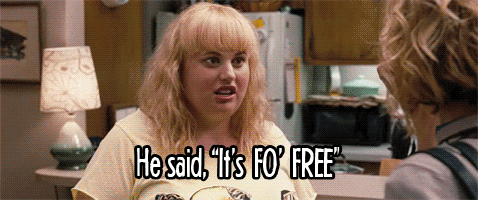We’ve all seen them. The remarkable athletes that compete in the Olympics to be the very best. Little kids who watch them turn to their parents and say “I want to be Michael Phelps when I grow up!” But what does it take be Michael Phelps? Or Usain Bolt? Or Simone Biles? Or really any athlete who has won a gold medal?
It’s one in a million. That’s my take at least. One of my favorite books is “The Outliers” by Malcolm Gladwell, a book on my sophomore year reading list for the summer, a book that nearly all of my peers found terribly boring but I find fascinating. The main theme Gladwell hammers home is the idea of 10,000 hours. To be at the top of your field, you need to practice for 10,000 hours. Whether it’s a violinist, a swimmer, a runner, or a gymnast, the people who are the best are the people who have dedicated their lives to their passion. It’s obvious that Simone Biles has practiced for years, since she was a small child, and all that practice has finally paid off. But what makes her special? There are plenty of other gymnasts who have practiced for as long as or longer than her yet they don’t have four gold medals. Why did Katie Ledecky blow her competition away so completely? And why is Michael Phelps so damn good?
It goes back to when and how they got started. They all started when they were young; Simone at 6, Katie at 6, and Michael at 7. Simone started because of trip during day care and someone suggested she stick with it. At age 8 she had her own coach. Katie’s brother swam and her mother swam in college. Michael’s father played high school and college football and tried out for the Redskins so he had athletics in his family, as well as his sisters swimming. He began to be coached at age 10. So they all had family connections that led them into their sport. But so what? Lots of people start sports at a young age but they don’t get to the Olympics.
That is where the outliers come in.
Let’s look at Michael Phelps. He’s not normal. He can’t be. To win 23 (?!) gold medals you can’t be an average Joe from Baltimore; you have to be super human. And he is. He’s 6’4 and has a wingspan of 6’8; his feet are size 14 and they bend 15 degrees more than the average human’s, making them like flippers; his torso is abnormally long; plus he’s double jointed nearly everywhere. And if you think that’s just physical stuff, lots of people are really tall with huge arms and feet just wait, there’s more. He’s chemically different. Normal people produce lactic acid, which becomes lactate, after intense exercise which causes fatigue. Michael Phelps produces almost half the amount of lactate, which allows him to recover easier and thus swim better in more races.
He also swam 50 miles a week preparing for Beijing in 2008.
Then there’s Usain Bolt, who just keeps winning. He seems like a regular person but he’s not. The four men on the US’s 4x100 relay are 5’7, 5’10, 6’1, and 5’9. Usain Bolt is 6’5, nearly a foot taller than the US’s Mike Rodgers. This means is he has a huge stride and takes an average of 41 stride to Tyson Gay’s 44 in the 100m and takes 264 steps in a minutes compared to Gay’s 288. Then there’s the country of Jamaica. Genetically speaking, many Jamaicans have a gene that gives them a larger heart, pumping more oxygenated blood to the body. Some regions of the country “contain the island’s aluminium ore deposits” that, when ingested by the mother during the early days of pregnancy and infancy “promotes the development of fast-twitch muscle fibres in growing fetuses”, making Jamaicans faster than Americans.
I could go on and on about the advantages of Olympic gold medalists but I think you get the point. So while it’s great and all for kids to look up to Michael and Simone and Katie, unless they have superhuman abilities, chances are they’re going to be looking on in awe at these remarkable athletes with us normal people.








 The minimum wage is not a living wage.
StableDiffusion
The minimum wage is not a living wage.
StableDiffusion
 influential nations
StableDiffusion
influential nations
StableDiffusion












